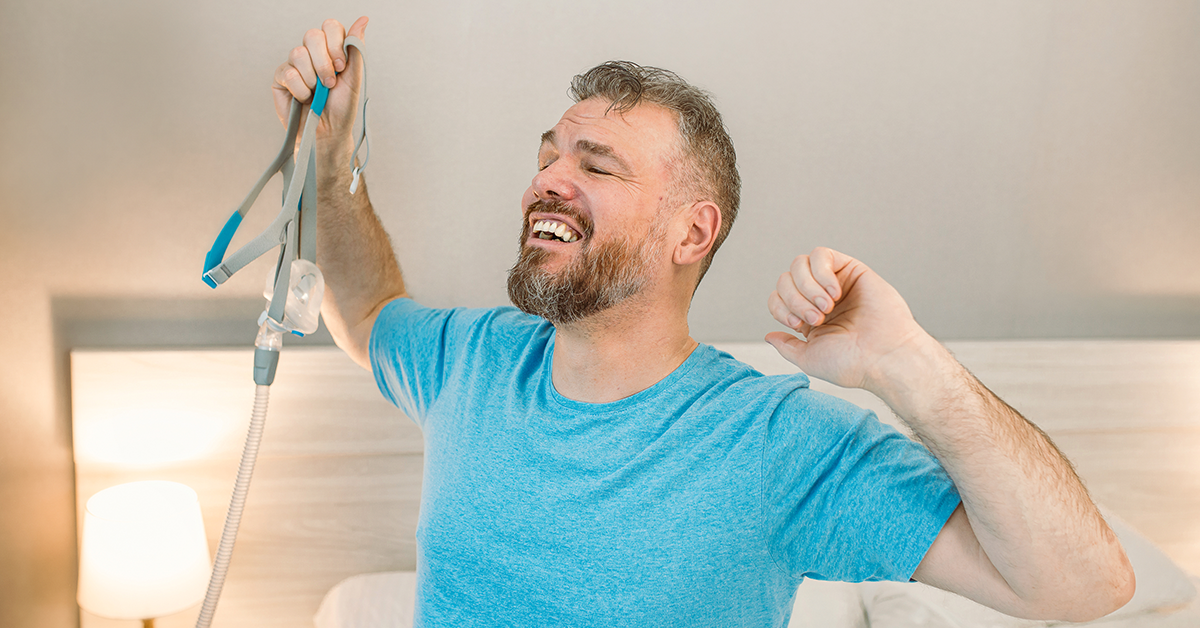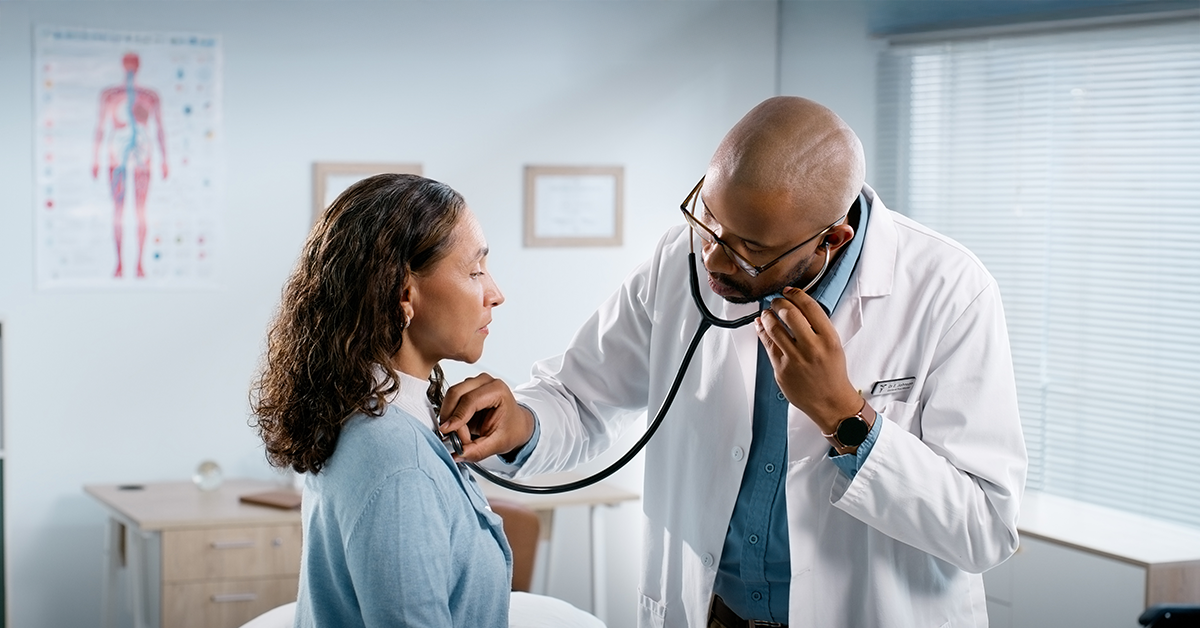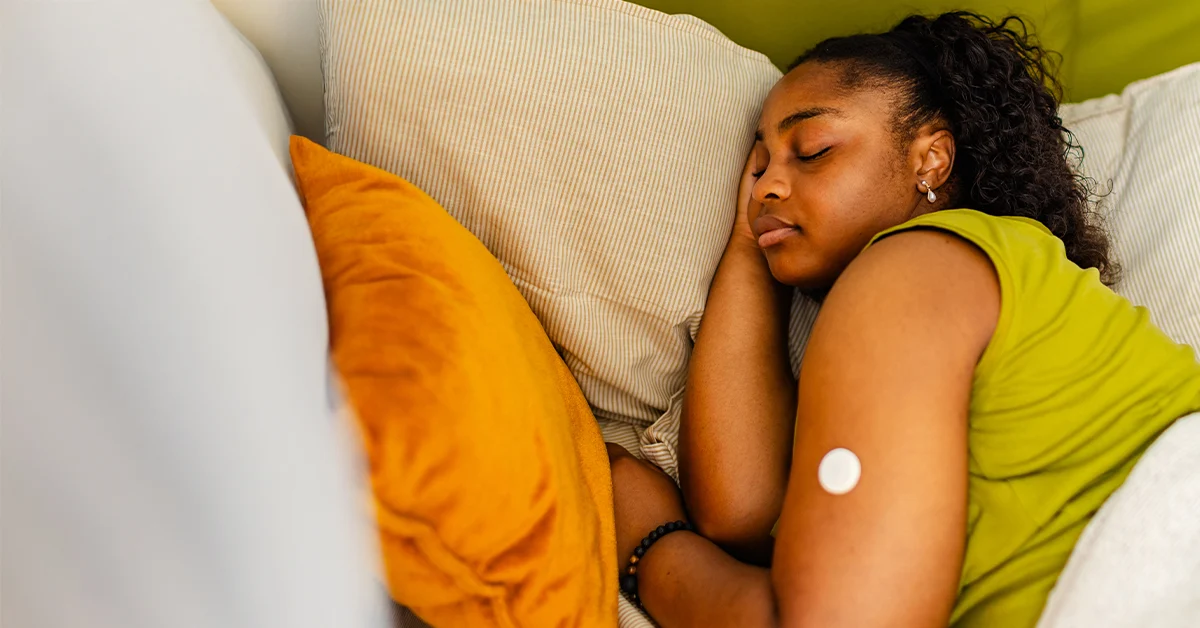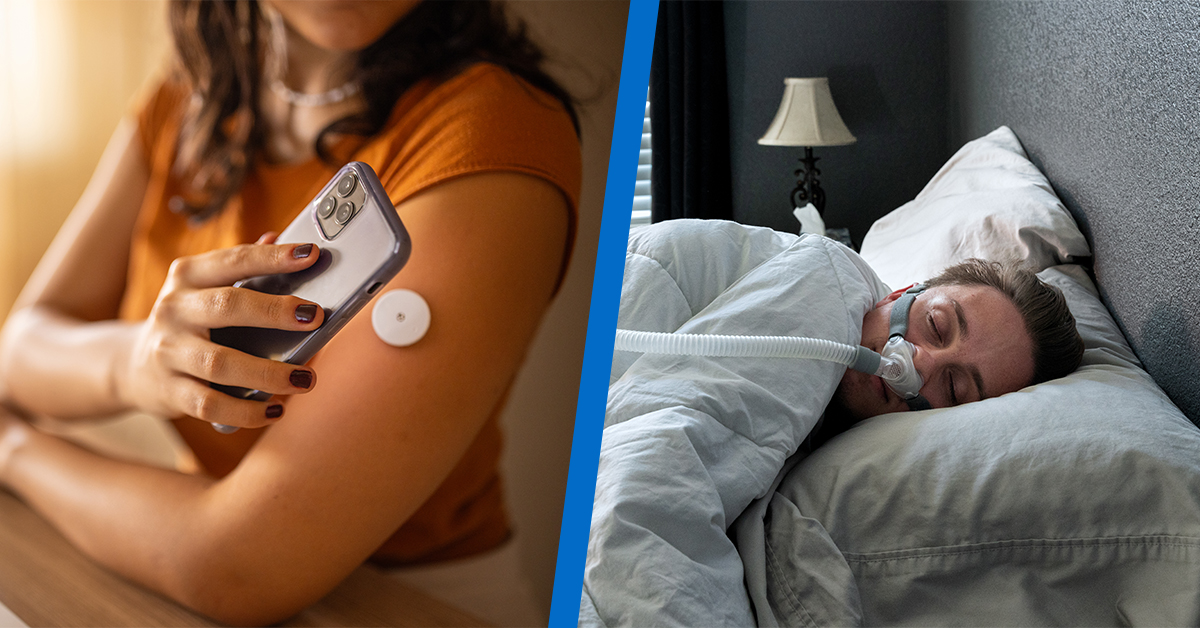The Facts About CPAP (Continuous Positive Airway Pressure), the Proven Treatment for Sleep Apnea
Sleep apnea is a common condition, affecting more than 22 million Americans and more than 100 million people worldwide.
Sleep apnea happens when a person’s airway is obstructed, which interrupts and even stops breathing during sleep—sometimes hundreds of times during the night. This decreases the amount of oxygen delivered to vital organs, which can lead to serious health conditions such as high blood pressure, diabetes, heart attack, stroke, and obesity.
Learn more: What is Sleep Apnea?
Fortunately, there is a very effective, proven treatment for sleep apnea called CPAP (continuous positive airway pressure). This treatment is so popular that more than 8 million Americans use CPAP machines to treat their condition.
Robert Miller, Vice President at Apria and registered sleep technologist, states, “This is why CPAP is considered the 'gold standard' of sleep apnea care.”
How Does a CPAP Machine Work?
CPAP involves wearing a mask that fits comfortably over your nose or mouth while you sleep. The mask is connected to a machine by your bed that provides a constant, quiet flow of air to keep your breathing passages open to ensure normal breathing and better sleep.
⭳ Download a printable version of this article (PDF)
The basic components of a CPAP machine include:
- An air pump housed in a base unit, which has filters that remove impurities from the air
- A cushioned mask that fits snugly on your face
- A hose that connects the air pump to the mask
- A frame that holds the mask and can attach to headgear
- “Elbow” pieces that act as joints
- Adjustable straps that let you customize the fit of the device
- Sometimes, a humidifier, which adds moisture to the air before it enters the mask, making your treatment more comfortable. Some humidifiers also heat this air
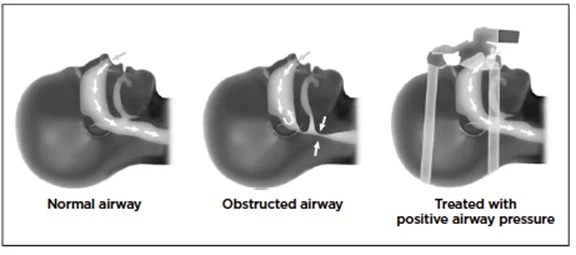
What is a BiPAP Machine?
BiPAP stands for bilevel positive airway pressure, and it is very similar to a CPAP machine. The main difference: CPAP machines maintain the same pressure while you inhale and exhale. Some people find the constant single pressure uncomfortable to breathe, especially when they exhale.
For this reason, BiPAP devices are a valuable alternative. BiPAP delivers air at two alternating levels: a higher pressure for when you inhale, and a lower pressure for when you exhale. Like CPAP machines, BiPAP machines also require a face mask and a hose connected to a device that pumps air to help you breathe more normally as you sleep.
Apria’s Robert Miller adds, “Because BiPAP uses two pressures, it is more like natural breathing, which many people with sleep apnea find more comfortable.”
BiPAP machines may also be appropriate for people with a form of sleep apnea called central sleep apnea (CSA). With CSA, rather than having blocked airways, your brain doesn't send proper signals to the muscles that control breathing because of problems with your body’s central nervous system. So you make no effort to breathe, leading to slower, shallower breathing.
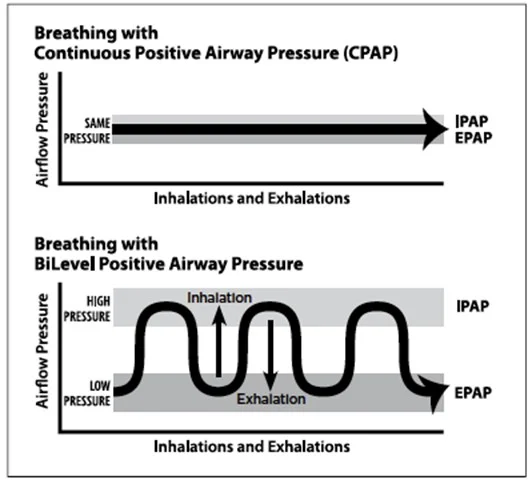
Why Is It Important to Regularly Clean Your CPAP and BiPAP Machine?
By keeping your CPAP machine clean, you prevent the build-up of any harmful bacteria or mold. Be sure to clean your mask, tubing, and water chamber regularly—ideally, every day but at least once a week. Be sure to follow the manufacturer’s guidelines for cleaning your CPAP or BiPAP machine.
Why Is It Important to Routinely Replace Your CPAP and BiPAP Supplies?
For your therapy to be successful, it is important to have the supplies you need when you need them—and to replace them regularly. Timely replacement provides two important benefits:
- Ensures a consistently good and comfortable mask seal
- Reduces the buildup of bacteria, viruses, and allergens that can lead to infection
Replace the following once a month:
- Full-face mask cushions
Replace the following twice a month:
- Nasal mask cushions and nasal pillows (including oral/nasal combos)
- Disposable filters
Replace the following every three months:
- Mask frame (excluding headgear)
- Tubing (standard or heated)
Replace the following every six months:
- Headgear and chin straps
- Humidifier water chamber
- Non-disposable filters
Why Is It Important to Stick with Your Treatment?
The most important reason to stick with CPAP/BIPAP treatment is, of course, to help improve the quantity and quality of your sleep—and in the process, improve your overall health and well-being.
When people with sleep apnea begin using a CPAP/BiPAP machine, the results are almost always immediate and often quite dramatic. Regularly using a CPAP machine can help:
- Increase energy and alertness
- Improve blood pressure level
- Improve glucose tolerance
- Reduce daytime sleepiness
- Produce a better mood and attitude
Sleep apnea has clear benefits. But achieving and maintaining the benefits of CPAP depends on sticking with it. Robert Miller cautions, “CPAP is a treatment, not a cure. If you stop using your CPAP machine, your sleep apnea is likely to worsen.”
Is It Hard to Get Used to CPAP Treatment?
Some people have a hard time staying with CPAP treatment because they find it uncomfortable. But there are simple things you can do to make CPAP treatment more comfortable, so you can enjoy its benefits and get a good night’s rest. Learn more now.
How Do You Get Started with CPAP Treatment?
Talk with your doctor about whether CPAP is right for you. If it is, many resources are available to help you start smart and stick with it!

.png)
